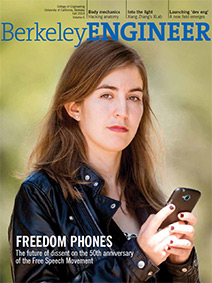Sight for sore eyes
What if everyone could clearly see their smartphone, tablet, computer and TV screens without having to wear eyeglasses? Brian Barsky, professor of computer science and vision science and affiliate professor of optometry, teamed up with colleagues at MIT to improve vision-correcting display technology. Using an iPod for their prototype, they devised algorithms to make adjustments in the display to compensate for various vision impairments. They designed ways to manipulate the intensity of light emanating from each pixel and added a perforated touchscreen “mask” to further control light and sharpen focus. Given an eyeglasses prescription, researchers can now pre-correct the display to enable that user to see the screen in sharp focus without glasses. The technology could not only help millions who wear glasses, but it could also be transformative for those with vision problems that cannot be corrected by eyeglasses. “People who are unable to view displays are at a disadvantage in the workplace as well as in other aspects of their lives,” says Barsky.

In November, this research was recognized by Scientific American as one of 10 world changing ideas of 2014.

